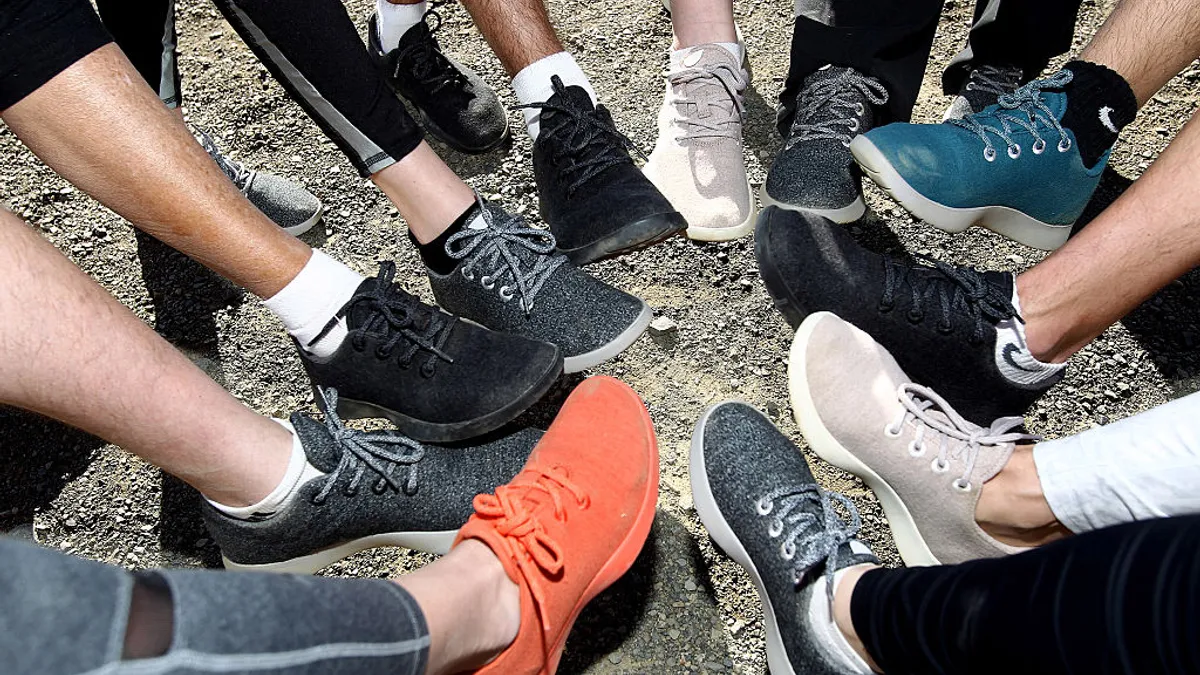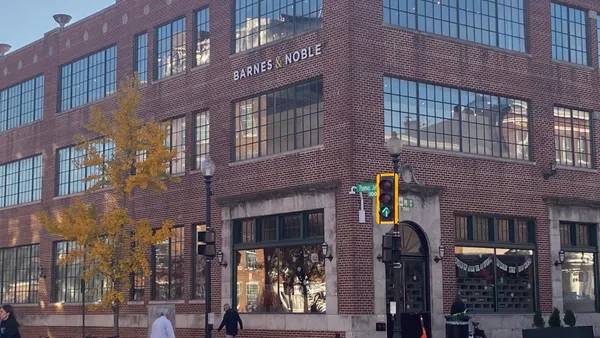Dive Brief:
- Allbirds has boosted inventories by 55% year over year before the holidays by relying on planning, secondary sourcing and regional diversification, CFO Mike Bufano said in the company's first earnings call last week.
- "Given the macro supply chain and logistics environment, we felt it was prudent to take advantage of our strong balance sheet and increase our inventory positions," Bufano said.
- Half of the shoe and apparel company's production is based in Vietnam, but Allbirds has "not experienced any government-mandated manufacturing shutdowns" in the country, Bufano told investors.
Dive Insight:
Longer lead times and strong consumer demand ahead of the holidays prompted Allbirds' move to bolster its inventories, the company said. Its Q3 inventories rose to $99 million from $64 million in the same quarter last year, according to the company.
Allbirds managed to avoid disruptions from monthslong pandemic-related factory shutdowns in Vietnam that cost Nike at least 10 weeks of production and prompted Crocs to shift manufacturing elsewhere. Allbirds prides itself on its "small, tight-knit supply chain" and multi-year relationships with suppliers in the country, as well as in China, Indonesia, South Korea, Peru and the United States.
In addition to a tight-knit supply chain, Allbirds also uses a vertical distribution model. That model allowed the startup to maintain premium pricing while shortening go-to-market timelines, Allbirds co-founder and co-CEO Joey Zwillinger told investors.
"There's no leakage in price," Zwillinger said, a critical factor to maintain margins, as Allbirds faced higher warehousing costs and outbound holiday shipping surcharges.
Bufano predicted "some sort of normalization of logistics costs" over the next five years.
"Not saying we'll go all the way back to 2019 or pre-COVID levels," he said. "But ... we don't think we'll be at the exceptionally elevated levels we are today."
Allbirds was far from alone in building up inventories in Q3 to protect against continued supply chain disruption and handle high consumer demand.
Urban Outfitters pulled forward orders "because the supply chain is anywhere from four to six weeks longer than it was two years ago," COO Frank Conforti said. Walmart boosted its inventory 10% year over year, CEO Doug McMillon told President Joe Biden in a briefing Nov. 29. Target has reported inventory levels "up substantially" from last year.
Supply chains have operated on lean inventory principles for years, but the pandemic brought some of those practices into question. While some businesses have increased safety stock, others have managed to return to a more normal level when comparing inventory as a percentage of sales. Inventories have gone up for those companies, too, but largely in an attempt to keep pace with higher demand.
Biden expressed confidence during remarks on the nation's supply chains last week that retailers will have adequate stock for the holidays.
"Because of the actions the administration has taken in partnership with business and labor, retailers and grocery stores, freight movers and railroads," the president said, "those shelves are going to be stocked."














